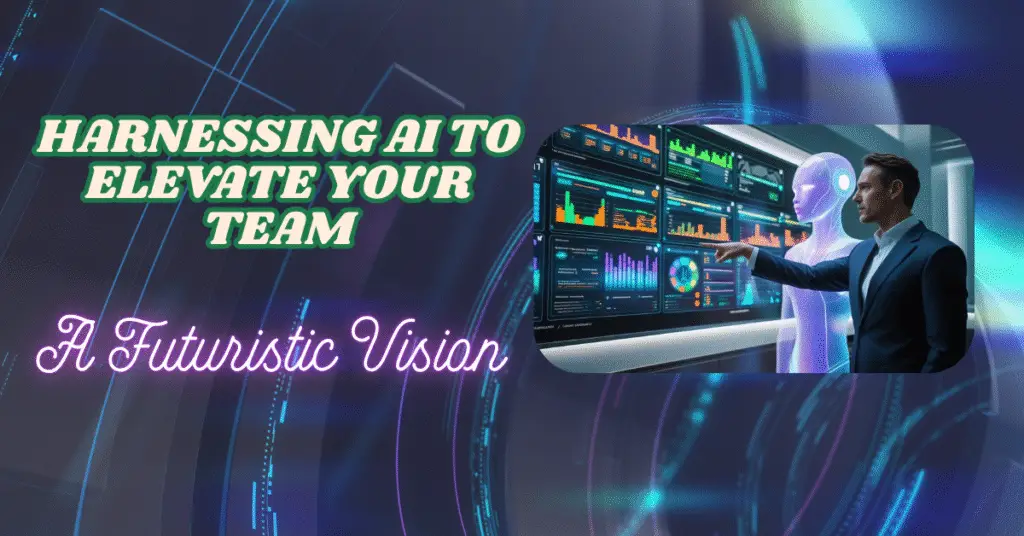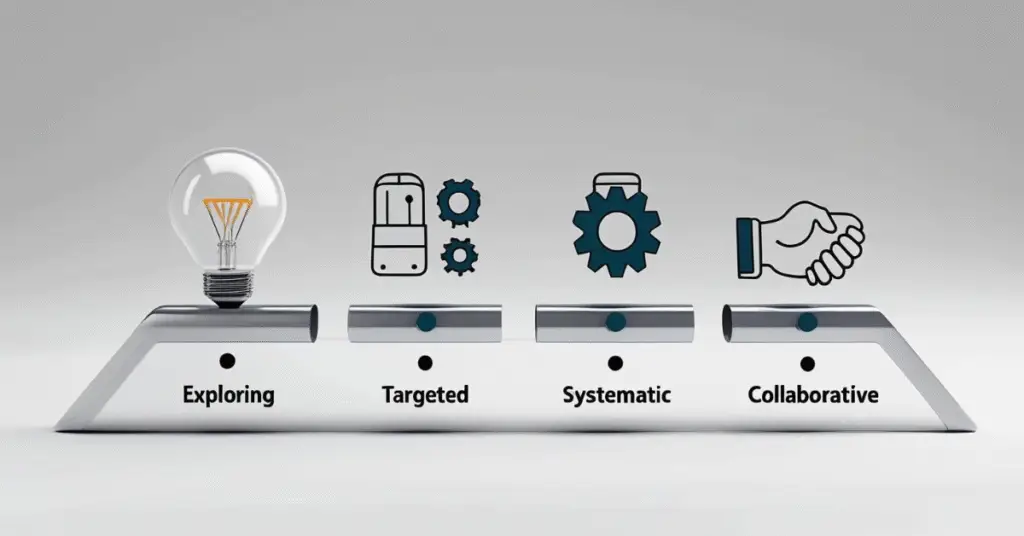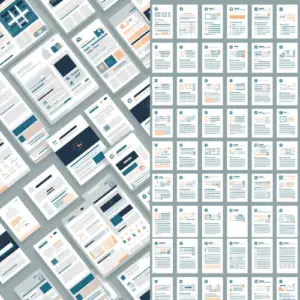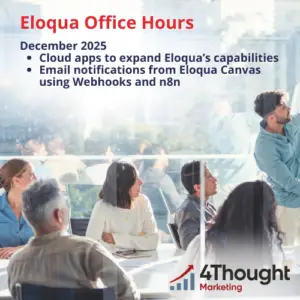
Imagine stepping into a dynamic control center where data streams flow in real time and intelligent assistants stand ready to streamline routine tasks. Beside every team member is an AI coworker: a reliable partner that handles data aggregation, preliminary analysis, and first-draft creation—so that human experts can focus on strategy, critical judgment, and creative innovation.
In this model, “AI-First” doesn’t mean “AI instead of people.” It represents a collaborative shift toward an AI-Forward organization, where AI coworkers are embedded teammates rather than standalone replacements. From generating initial content outlines and uncovering hidden trends to suggesting live optimizations, the AI coworker accelerates and enhances every phase of work. Built-in checkpoints—clear prompt guidelines, review stages, and dual-approval processes—ensure that people remain firmly in the decision-making seat.
Over the following sections, we’ll outline a clear roadmap for integrating AI coworkers into your organization: establishing a solid data foundation, deploying the right technology, empowering your teams with AI skills, embedding AI into daily workflows, and setting up robust quality-control measures. Let’s get started on unlocking higher efficiency and innovation together.
Roadmap to AI-Forward Organization & Co-Worker Readiness
Every transformation begins with a thoughtful plan. Here are the five essential steps to set up your AI coworker for success:
1. Inventory Your Data Sources
Start by cataloging all the places data lives—CRM records, web analytics, campaign performance logs, customer feedback—and documenting who owns each source and how frequently it’s updated. This “data inventory” gives you visibility into coverage gaps, quality issues, and compliance requirements. From there, you can prioritize which datasets to onboard first and define clear stewardship policies so that, over time, you build a consolidated, governed repository feeding reliable inputs into your AI models.
2. Deploy the Right Technology Stack
Choose AI platforms or machine learning operations (MLOPs) tools that integrate seamlessly with your existing systems—whether that’s your marketing automation software or data warehouse. Set up transparent dashboards and model registries to track performance metrics like accuracy, speed, and drift, so you can address issues before they affect operations.
3. Develop AI Fluency Across Teams
Host interactive workshops on crafting effective AI prompts, evaluating model outputs for bias or errors, and interpreting performance dashboards. Simulate real projects—have teams brief the AI, review its work, and iterate on prompts—so everyone gains confidence in collaborating with AI.
4. Embed AI into Everyday Decisions
Move beyond post-project reports by weaving AI suggestions into live workflows. For instance, if your AI flags a recommended budget adjustment midway through a campaign, present that insight alongside your performance dashboard so strategists can review and act immediately.
5. Implement Quality-Control Protocols
Set up automated checks to scan AI-generated assets for compliance, consistency, and ethics before any release. Pair these with a human review step: designate “AI champions” who validate high-impact outputs, ensuring speed doesn’t compromise quality. These safeguards not only protect brand and compliance, they also formalize AI collaboration best practices—so every team member understands how to co-author work with their AI coworker.
Elevating Marketing Operations with AI coworkers through AI Collaboration
When marketing teams embrace AI as a collaborative partner, they unlock new levels of efficiency and creativity:
Why Agencies Benefit
Tasks that once took days—segmenting audiences, drafting content variations, building reports—can now be completed in hours. That frees your team to concentrate on customer insights, innovative campaign ideas, and personalized experiences.
Illustrative Use Cases
- Predictive Lead Scoring: AI analyzes engagement patterns and external signals to rank prospects. Sales reps then review edge cases and craft targeted outreach, refining the model with their feedback.
- Programmatic Bidding: An AI service adjusts bids in real-time based on defined objectives. Strategists set overall goals, monitor performance flags, and fine-tune parameters weekly.
- Creative Testing: Overnight, AI generates dozens of headline and image combinations, tests them on small segments, and ranks the top performers. Designers then polish the winners, infusing them with brand voice and nuance. This iterative AI collaboration cycle ensures every creative asset benefits from both machine scale and human artistry.
- Content Personalization: AI assembles customized copy snippets tailored by industry, stage, or preference. Brand managers spot-check samples to ensure alignment with tone guidelines and compliance standards.
From One-Off Campaigns to Continuous Improvement
Rather than launching a campaign and waiting for results, teams receive ongoing AI-driven recommendations, confirm them quickly, and watch the campaign evolve in real time. This continuous loop maximizes performance while keeping human creativity at the forefront.
Measuring Co-Pilot Maturity

Organizations progress through four stages as they integrate AI coworkers more deeply:
| Stage | Description | AI’s Role | Human’s Role |
| 0 | Exploring Possibilities | Sporadic tests and experiments | Manually review every AI suggestion |
| 1 | Targeted Adoption | AI supports specific tasks | Teams integrate AI into select workflows |
| 2 | Systematic Integration | AI woven into core platforms | Teams manage models, prompts, and alerts |
| 3 | AI-First Collaboration | AI underpins daily operations | Humans steer strategy, governance, innovation |
- Leadership Engagement: Executives define the vision, allocate resources, and track ROI on AI initiatives.
- Center of Excellence: Central teams build shared models, best practices, and monitoring tools.
- Operational Teams: Line teams craft prompts, interpret AI suggestions, and continuously refine both models and workflows.
Knowing your stage helps you plan targeted next steps—whether piloting a single-use case or scaling to enterprise-wide AI collaboration.
Integrated Architecture: How Data, Models, and Tools Work Together
To make your AI coworker truly seamless, you need an architecture where every component feeds the next in a governed, transparent way:
Data Foundation
All your customer, campaign, and operational data should flow into a single, well-managed repository (e.g., a data lake or CDP). Real-time streams—from CRM updates to web events—are ingested automatically, and data governance policies (catalogs, stewards, privacy checks) ensure that everything feeding your AI models is accurate, compliant, and auditable.
Model Management
Once data is centralized, you need a robust machine learning operations environment: a versioned model registry, automated training pipelines, and monitoring dashboards. Whenever performance dips or new data patterns emerge, retraining jobs kick off, and alerts notify your team of any anomalies. This layer keeps your AI coworker up-to-date and reliable.
Application Integration
Rather than stand-alone tools, AI services should plug directly into the systems your teams already use—marketing automation, ad platforms, content editors, reporting dashboards. Inline suggestions (e.g., budget recommendations next to spend charts, draft headlines inside your email builder) make it easy for people to accept, tweak, or reject AI output without switching contexts.
People & Process
Technology alone isn’t enough. Establish ongoing training (hands-on workshops in prompt design and model review), simulation exercises (practice projects under controlled conditions), and standard operating procedures (a clear human-review step for every high-impact AI recommendation). These practices ensure that AI contributions meet your quality, ethical, and brand standards every time.
Let’s hear from Heinz Klemann, Senior Marketing Consultant, BeastBI GmbH
AI Speeds Content Creation, Human Touch Prevails
AI has had the biggest positive impact on our content creation—especially for blogs and SEO content, but also on web or landing pages, ad copy, keyword research, and email texts. It speeds up almost every writing-related task and even enables things like text-to-voice, which we’re starting to use more often. Overall, content production has become much faster, but we’re also seeing that quality now matters more than quantity. To truly stand out or rank for competitive keywords, a human touch is still needed. Most “AI only” content feels generic and can be detected easily.
In the long run the LLM and/or Google will not prioritize or even allow content like that. This goes hand in hand with better AI content detection. Therefore, AI should be used as a support to create content but not something that does everything on its own.
Conclusion & Next Steps: Embracing Human–AI Partnership
Empower, Don’t Replace
True human–AI partnership means augmenting human talent, not displacing it. You are being AI-Forward, by offloading repetitive, data-intensive tasks to AI, your teams gain the freedom to innovate, strategize, and build deeper customer relationships.
Readiness Checklist
- Have you inventoried your key data sources and begun applying governance policies?
- Do you have end-to-end model pipelines with automated retraining and monitoring?
- Are AI insights surfaced directly within the tools your teams already use?
- Have you trained core “AI Champions” and codified human-review steps?
- Are compliance, bias, and brand checks integrated into every AI output?
Your First Coworker Project
Pick one high-volume, repeatable task—such as drafting email subject lines, adjusting ad bids, or generating weekly performance summaries. Pair a small team member with the AI “co-worker”, define clear review guidelines, and measure both time saved and quality uplift. Iterate on your prompts and process until the AI reliably delivers value.
When you see the first real gains (and you will), scale that pattern across additional use-cases, continually refining your architecture, training, and governance. That’s how you’ll transform from “experimenting” to “AI-Forward Collaboration”—and unlock your organization’s next wave of productivity and innovation.
Need Some Help!
Are you curious about how ready your organization is to work alongside AI? 4Thought Marketing can examine your current setup—your data, systems, team processes, and policies—and offer practical suggestions to help you move forward with confidence. We’d be glad to connect if you’d find an outside helpful perspective.





